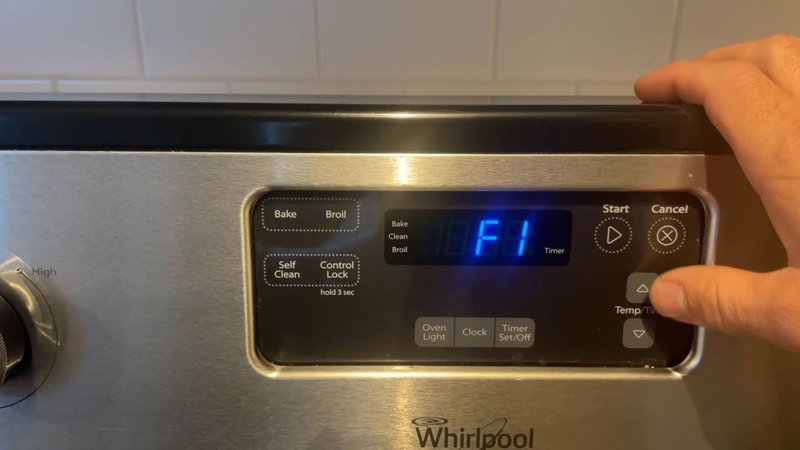
Now, you might be thinking, “Is my dishwasher broken forever?” Fortunately, the answer is usually no. The F1 error code is the dishwasher’s way of saying it needs a little help, sort of like a friend waving you down for assistance. With a bit of guidance, you can reset it and get things back on track. And while it might sound techy, resetting your dishwasher is simpler than you’d expect. So, let’s dive into the steps on how you can tackle this issue and ensure your dishes get sparkling clean without a hitch.
Understanding Error Code F1
Error codes can feel like speaking a different language, right? The F1 error on Whirlpool dishwashers is no exception. This code pops up when there’s an issue with the water inlet valve—a crucial component that helps your dishwasher fill correctly. Think of the valve as the gatekeeper of water flow. If it doesn’t work right, water doesn’t enter your dishwasher as it should, leaving your dishes high and dry.
What causes this hiccup? Well, several things could be at play. Your water inlet valve could be clogged, similar to how a drain might get stopped up with debris. Or perhaps it’s a case of a valve functioning poorly due to wear and tear. Sometimes, there could be an electrical issue affecting the valve’s signal to open or close. In some instances, even low water pressure from your home’s supply can trigger the F1 error.
So, why is understanding this important? By knowing that the error typically involves the water inlet, you can better troubleshoot and fix the problem. It’s like having directions before embarking on a road trip, ensuring that you know exactly where to go and what to do. With this knowledge, you’re quite literally halfway to resolving the issue.
Steps to Reset Your Whirlpool Dishwasher
Resetting your dishwasher after encountering the F1 error might sound daunting, but here’s the deal—it’s straightforward once you know what to do. First off, you need to power cycle your dishwasher. This is akin to rebooting a computer; it can often clear up minor glitches. To do this, unplug your dishwasher from its power source or turn off the circuit breaker. Wait for a good few minutes—let’s say, 5 to 10—before plugging it back in. This brief downtime allows the system to reset itself.
If the error persists after power cycling, you might need to dig a little deeper. This involves checking the water inlet valve. It’s not as scary as it sounds! The valve is usually located behind the lower access panel of your dishwasher. Once you find it, inspect it for any visible signs of blockage or wear. A good clean or repositioning might just do the trick. But remember to turn off the water supply first—just like you’d lock the door before leaving home.
Post-inspection, if everything looks good, try running a test cycle. Keep an eye on the dishwasher as it runs. If the error clears and the dishwasher fills up with water as it should, fantastic! You’ve successfully hit reset. But if the issue persists, it could be a more complicated problem which might require professional help.
Preventing Future Errors
Now that you’ve tackled the F1 error, let’s talk about keeping it from rearing its head in the future. Just like regular doctor check-ups keep us in top shape, routine maintenance can keep your dishwasher running smoothly. Start with regular cleanings of your dishwasher’s filters and spray arms to prevent clogs. It’s like brushing your teeth to ward off cavities.
Another smart move is to periodically inspect the water inlet valve. Make sure it’s free from debris and functioning correctly. Think of it as checking your car’s oil—important for longevity. If you live in an area with hard water, you might want to consider using a water softener or regularly descaling your dishwasher. Hard water can build up over time, leading to blockages that might trigger errors like the F1 code.
Lastly, keeping an eye on your water pressure can help too. If it’s consistently low, it might be worth having a plumber assess your home’s plumbing. They can help ensure your dishwasher gets all the water it needs. By proactively maintaining your appliance, you’ll ensure that your dishwasher continues to do its job without throwing a hitch—or an F1 error—into your routine.